Why is HDMI CEC not working on my Toshiba 55L7400U?
- CCameron PowersSep 7, 2025
If the HDMI® CEC operation is not working correctly on your Toshiba LED TV, turn off the TV and unplug the power cord. You can also try using a different HDMI® cable.
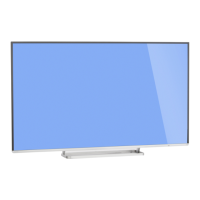
Why is HDMI CEC not working on my Toshiba 55L7400U?
If the HDMI® CEC operation is not working correctly on your Toshiba LED TV, turn off the TV and unplug the power cord. You can also try using a different HDMI® cable.
Why does my Toshiba 55L7400U have poor color display?
If your Toshiba LED TV has poor display color or no color, check for proper hookup connections between your devices and try another channel.
What to do if I have video input selection problems on my Toshiba LED TV?
If you're experiencing video input selection problems with your Toshiba LED TV, press INPUT a second time.
How to remove black box on Toshiba 55L7400U screen?
If you see a black box on the screen of your Toshiba LED TV, set the closed caption feature to Off.
Why can't I view external signals on my Toshiba 55L7400U?
If you cannot view external signals on your Toshiba LED TV, ensure that the Input Lock is set to Off.
| Screen shape | Flat |
|---|---|
| Response time | - ms |
| Display diagonal | 55 \ |
| Display brightness | - cd/m² |
| LED backlighting type | Full-Array |
| Supported video modes | 1080p |
| Supported graphics resolutions | 1920 x 1080 (HD 1080) |
| Motion interpolation technology | ClearScan 240 Hz |
| 3D | - |
| Video apps | Netflix, YouTube |
| Smart modes | Dynamic |
| PC in (D-Sub) | No |
| HDMI ports quantity | 4 |
| DVI-D ports quantity | 0 |
| USB 2.0 ports quantity | 2 |
| Component video (YPbPr/YCbCr) in | 1 |
| Product color | Black |
| Panel mounting interface | 400 x 400 mm |
| Power consumption (standby) | - W |
| Package depth | 185 mm |
| Package width | 1407 mm |
| Package height | 818 mm |
| Package weight | 21999 g |
| Sustainability certificates | ENERGY STAR |
| Depth (with stand) | 191 mm |
|---|---|
| Height (with stand) | 757 mm |
| Weight (with stand) | 16420 g |
| Depth (without stand) | 66 mm |
| Width (without stand) | 1242 mm |
| Height (without stand) | 716 mm |
| Weight (without stand) | 15286 g |
Explains safety caution symbols and their meanings to prevent hazards.
Lists and describes the key features and technologies of the TV.
Provides steps for initial TV setup, location selection, and cable connections.
Details the buttons, sensors, and ports on the front and side of the TV.
Explains the buttons and input/output terminals located on the back of the TV.
Describes various cable connectors required for connecting devices to the TV.
Explains the coaxial cable connection for antennas and cable TV services.
Details the standard composite video and stereo audio connections.
Describes component video connections for higher quality video output.
Explains HDMI cables for digital audio and video transmission.
Details the IR blaster cable for controlling remote-controlled devices.
Explains optical audio cables for digital audio output connections.
Describes analog RGB cables for connecting computers to the TV.
Details LAN cables for connecting the TV to a home network.
Guides on connecting broadcast sources like antennas and receivers.
Provides instructions on how to install batteries in the remote control.
Details the functions of various buttons on the TV remote control.
Guides the user through the first-time setup process after turning on the TV.
Details the step-by-step process for the Quick Setup wizard.
Explains how to access and navigate the TV's main menu system.
Explains how to manually select and store preferred TV channels.
Guides users on manually entering channel numbers for tuning.
Details how to set channels to be skipped during channel scanning.
Explains how to skip unused video input sources in the selection menu.
Describes how to assign custom names to analog TV channels.
Allows users to assign custom labels to different video input sources.
Covers methods for changing TV channels, including next and specific channel tuning.
Guides on how to choose and switch between different video input sources.
Explains how to turn on and view closed captions or text displays.
Explains the necessity of a PIN for certain menus and how to set one.
Explains how to use the V-Chip feature to block content based on ratings.
Details how to lock specific TV channels, requiring a PIN for viewing.
Explains how to lock video input sources, preventing access without a PIN.
Details various picture size options like Native Mode, 4:3, Full, and TheaterWide.
Details various picture modes like AutoView, Dynamic, Standard, Movie, Game, and PC.
Guides on adjusting settings like Backlight, Contrast, Brightness, Color, Tint, and Sharpness.
Introduces advanced picture settings like Edge Enhancer and Dynamic Contrast.
Covers audio adjustments including muting, sound modes, and volume.
Details various sound modes like Standard, Music, Movie, Clear Voice, and Sonic Separation.
Introduces TV's ability to share media across a home network and connect to the Internet.
Guides on selecting network connection type (Wired or Wireless) and setup methods.
Details three methods for wireless network setup: Easy, Assisted, and Manual.
Guides on setting up IP address using Auto or Manual configuration.
Guides on performing a test to check the TV's Internet connectivity.
Details the on-screen software keyboard layout and input operations.
Guides on upgrading the TV's software via the network connection.
Details how to connect a PC or mobile device wirelessly using Intel WiDi.
Explains the Flip Bar feature for displaying program thumbnails for quick channel selection.
Introduces companion apps for connecting to content and home networks via smart devices.
Guides on selecting and setting up the Apps Control Profile for device management.
Guides on pairing compatible tablets or smartphones with the TV for app usage.
Provides initial steps and common solutions for general TV problems.
Offers solutions for when the TV becomes unresponsive to remote or panel controls.
Addresses common issues related to picture quality and display.
Addresses common issues related to audio output and sound quality.
Provides solutions for issues with the TV's remote control functionality.
Discusses correct HDMI CEC operation and troubleshooting steps for incorrect behavior.
Addresses issues with connecting to the internet and network setup.
Addresses issues with wireless network setup, router/AP configuration, and Wi-Fi Protected Setup.
Troubleshoots issues with MediaShare functionality, including device connectivity and file compatibility.
Provides solutions for Cloud Portal freezing or delays during navigation.
Lists the TV system standards supported (NTSC, ATSC, Digital Cable).
Details the VHF, UHF, and Cable TV frequency ranges supported.
Specifies the power source requirements for the TV.
Lists and describes the specifications for video and audio input terminals.
Lists specifications for HDMI input compliance and suggested formats.
Lists specifications for wireless connection standards, frequency range, and security.
Lists the items included with the TV, such as remote and manuals.
Lists acceptable signal formats, resolutions, and frequencies for PC input.
Lists acceptable signal formats, resolutions, and frequencies for HDMI inputs.
Explains using color buttons with other buttons for direct TV operation.
Guides on configuring the TV's keyboard layout for special characters.
Details key combinations for normal, Shift, Right Alt, and Shift+Right Alt character input.



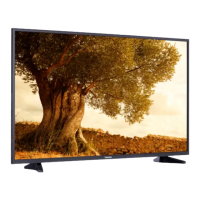
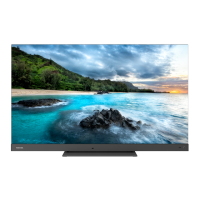

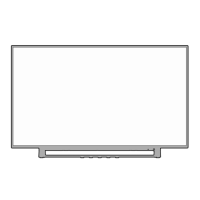


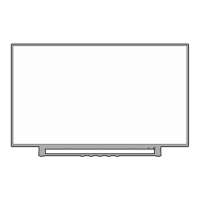

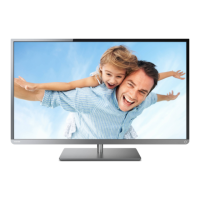
